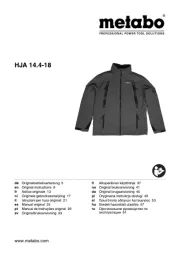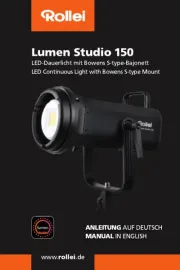Skytronic 651.671 Handleiding
Bekijk gratis de handleiding van Skytronic 651.671 (19 pagina’s), behorend tot de categorie Diversen. Deze gids werd als nuttig beoordeeld door 74 mensen en kreeg gemiddeld 5.0 sterren uit 37.5 reviews. Heb je een vraag over Skytronic 651.671 of wil je andere gebruikers van dit product iets vragen? Stel een vraag
Pagina 1/19

DC TO AC POWER INVERTERS
651.668 Invertor 1500W (12V-220V) HQ
651.671 Invertor 1500W (24V-220V) HQ
651.674 Invertor 2000W (12V-220V) HQ
651.677 Invertor 2000W (24V-220V) HQ
651.680 Invertor 3000W (12V-220V) HQ
651.683 Invertor 3000W (24V-220V) HQ
Instruction Manual
Gebruiksaanwijzing
Mode d’Emploi
Gebrauchsanleitung
Brugsanvisning
UK
SKYTRONIC INVERTERS
An Inverter is an electronic device that converts low voltage DC (Direct Current) from a battery or other power
source to standard 230 Volts AC (Alternating Current) household power.
The Inverter converts power in two stages. The first stage is a DC to DC amplification which raises the low voltage
DC at the inverter input to 290 Volts DC. The second stage is the actual inverter stage which converts the high
voltage 290 Volts DC into 230 Volts AC.
The DC to DC stage uses a high frequency power conversion technique that eliminates the need for bulky
transformers found in more traditional inverters. The benefit of this is a significant reduction in size and weight.
The inverter stage uses advanced power MOSFET transistors in a full bridge configuration, which means that the
inverter has a much stronger load handling capability.
A power inverter converts DC power into conventional AC power which can run all kinds of household products
such as: kitchen appliances, microwaves, power tools, TVs, radios, computers and more. You just connect the
inverter to a battery, and plug your AC devices into the inverter and you've got power on the go.
The power inverter draws its power from a 12 Volt or 24 Volt battery, or several batteries wired in parallel. The
battery will need to be recharged as the inverter draws the power out of it. The battery recharges by running the
automobile motor, gas generator, solar panels, or wind and not with the power inverter. During blackouts, an
inverter can be used for emergency power by use with a car battery with the vehicle running and an extension cord
running into the house, where you can then plug in electrical appliances.
Using the SkyTronic 230V inverters
The SkyTronic range of inverters transform 12/24V battery voltage into 230V mains voltage, thus enabling you to
use your domestic equipment everywhere you want e.g. on camping, on a boat, in your car, etc. The regulated
output voltage makes the inverters suitable for use with sensitive devices such as TV sets, video and audio
devices, PCs or laptops and many more.
General features of SkyTronic inverters
• high performance at low heat production
• 50Hz stable output frequency
• regulated 230V output voltage
• protection against short circuit and overheating
• with SkyTronic battery protection system. If the battery voltage drops to 10.3V (21V for 24V batteries) the
inverter emits an alarm signal. If the battery voltage drops even further, the inverter shuts off automatically.
This advanced protection system avoids to over discharge the battery.
WARNING
SkyTronic inverters supply an output voltage of 230V which is as dangerous as the domestic mains voltage!
Therefore only use double-insulated devices and replace immediately leads that are in bad condition. Don’t expose
the inverters to humidity and place them in a well ventilated area. The inverters with an earth connector can be
connected to a grounding point such as a metal part of a boat or the car chassis.
Rechargeable Appliances:
CAUTION: Certain rechargeable devices are designed to be plugged directly into an AC socket to be recharged.
These devices may damage the devices or POWER INVERTER. When first using a rechargeable device, monitor
its temperature for 10 minutes to ensure that it does become abnormally hot. This abnormal heat indicated that the
device should not be used with this POWER INVERTER.
Important!
Under full load, high current is flowing through the battery cables. Therefore it is recommended to use only the
supplied cables and no extension cables in order to avoid unacceptable voltage losses. If necessary, use an
extension cord in the 230V circuit to the connected unit. To comply with the legal standards, the inverter may only
be used with the supplied low voltage cables. Do NOT extend them.
The connected battery must be in good condition and fully charged. After some time, it may be necessary to start
the car or boat in order to recharge the battery. At that moment, the inverter must be switched OFF beforehand in
order to avoid damage due to excessive battery voltage.
On/off switch
Connect the inverter to the battery (red is positive, black is negative). Make sure that all connections are of good
quality. First switch on the inverter and afterwards the unit to be powered. Switch off in reverse order.
Thermal protection
All SkyTronic inverters are protected against thermal overload. If the temperature of the inverter rises above 65°C,
the protection circuit is automatically activated and the unit is switched off. First switch off the connected unit and
then the inverter. Let the units cool down before you switch them on again. Check if the cooling fan is not
obstructed and make sure that there is sufficient air flow around the unit.
TROUBLESHOOTING
If you experience problems with appliances not operating correctly when there are two or more devices connected
to the same circuit, the only remedy is to disconnect one of the units to reduce the load. If the inverter overheats
when the load is at the rated maximum, try running the vehicle engine while running the inverter. (REMEMBER to
switch OFF the inverter when starting the engine.) This will boost the battery voltage allowing the inverter to
operate more efficiently, allowing use of the engine for longer periods of time in high load applications.
Audio Systems
Some inexpensive portable stereo systems will emit a buzzing noise through the speakers when operated by an
inverter. This is because the power supply in the stereo unit does not adequately filter the modified sine wave
produced by the inverter. The only solution is to use a stereo system with a more efficient power supply.
GENERAL SAFETY
1. Always operate the inverter from the correct power source, 12V or 24V battery ( As applicable).
2. When connecting the cables from the battery to the inverter observe the correct polarity, RED is positive ( + )
and BLACK is negative (-).
3. Ensure the DC input connections are secure, because a loose contact can result in excessive voltage drop and
can cause overheated wires and melted insulation.
4. Locate the inverter and power source (battery) away from any inflammables to avoid any possible fire or
explosion. NOTE. It is normal to experience sparks when connecting the positive terminal of the inverter from
the battery. This is due to the current flow charging the capacitors in the inverter.
5. Where applicable, always ground the inverter before operation to avoid possible shock.
6. Check that the power consumption of the appliance to be operated is compatible with the output capacity of the
inverter. Care should be taken with microwave ovens as the power quoted on the front panel is usually the
heating power and not the actual power drawn. For appliances with no power rating ( W or watts) shown then
the current rating ( A or Amps ) can be multiplied by 230 to give an approximate power rating.
7. The battery must be of adequate capacity (ampere-hour) to run the inverter at the power required. The
maximum current ratings for the various inverter models are’
12V-1500W = 156A 24V-1500W = 78A
12V-2000W = 208A 24V-2000W = 104A
12V-3000W = 312A 24V-3000W = 156A
Ampere-hour (Ah) capacity is a measure of how many amperes a battery can deliver for 20 hours, e.g. a
typical marine or RV battery rated @100Ah can deliver 5amps for 20hrs (5A x 20hrs = 100Ah)
8. In the event of a continuous audible alarm or automatic shut off, immediately switch off the inverter until the
problem has been identified and rectified.
9. Disconnect the inverter when not in use.
10. Do not expose the inverter to moisture or site near sources of heat and inflammable materials.
INSTALLATION
1. Install inverter in a cool, dry and well ventilated area away from any inflammable material.
2. Ensure the DC power cables are as short as possible (<2m ) and of suitable size to handle the current
required. This is to minimise any voltage drop when the inverter draws high currents. Remember solid, secure,
clean connections are essential for optimum performance.
3. Grounding. Connect the chassis ground lug ( where applicable ) to earth ground or car chassis using # 8 AWG
wire, preferably with green / yellow insulation.
4. Battery Type and Size. Make sure the battery has enough capacity to run the inverter at the power needed.
Inverters can be powered by normal car batteries but it is recommended to start the engine every 30 - 60
minutes and let it run for about 10minutes to recharge the battery. Remember to switch OFF the inverter. For
the larger inverters or where extended operating times are required, then Deep Cycle leisure or traction type
lead acid batteries are recommended as they are designed for deep discharge where they will be repeatedly
discharged and recharged. When sizing your battery it is better to have extra capacity as you will have more
reserve and the battery will not be discharged as deeply. To obtain sufficient battery capacity you may need to
use more than one battery. Two identical batteries can be connected in parallel (+) to (+) and (-) to (-) to double
the capacity.
CAUTION: Do not connect batteries of different makes or AMP- hour (Ah) rating. Connections to battery post
must be made with solid secure connectors that provide a reliable, low resistance connection. Clean terminals
regularly.
Product specificaties
| Merk: | Skytronic |
| Categorie: | Diversen |
| Model: | 651.671 |
Heb je hulp nodig?
Als je hulp nodig hebt met Skytronic 651.671 stel dan hieronder een vraag en andere gebruikers zullen je antwoorden
Handleiding Diversen Skytronic

8 Juni 2023

8 Juni 2023

8 Juni 2023

8 Juni 2023

8 Juni 2023

8 Juni 2023

8 Juni 2023

8 Juni 2023

8 Juni 2023
Handleiding Diversen
- Siemens
- JBSystems
- Innovate
- Vitalmaxx
- Pride
- Hager
- PG03
- Spa
- Quintezz
- Zolid
- AED
- Mediashop
- Days
- Maxx
- Storchenmuhle
Nieuwste handleidingen voor Diversen

3 September 2024

1 September 2024

23 Oktober 2023

23 Oktober 2023

23 Oktober 2023

17 Oktober 2023

17 Oktober 2023

17 Oktober 2023

17 Oktober 2023

17 Oktober 2023